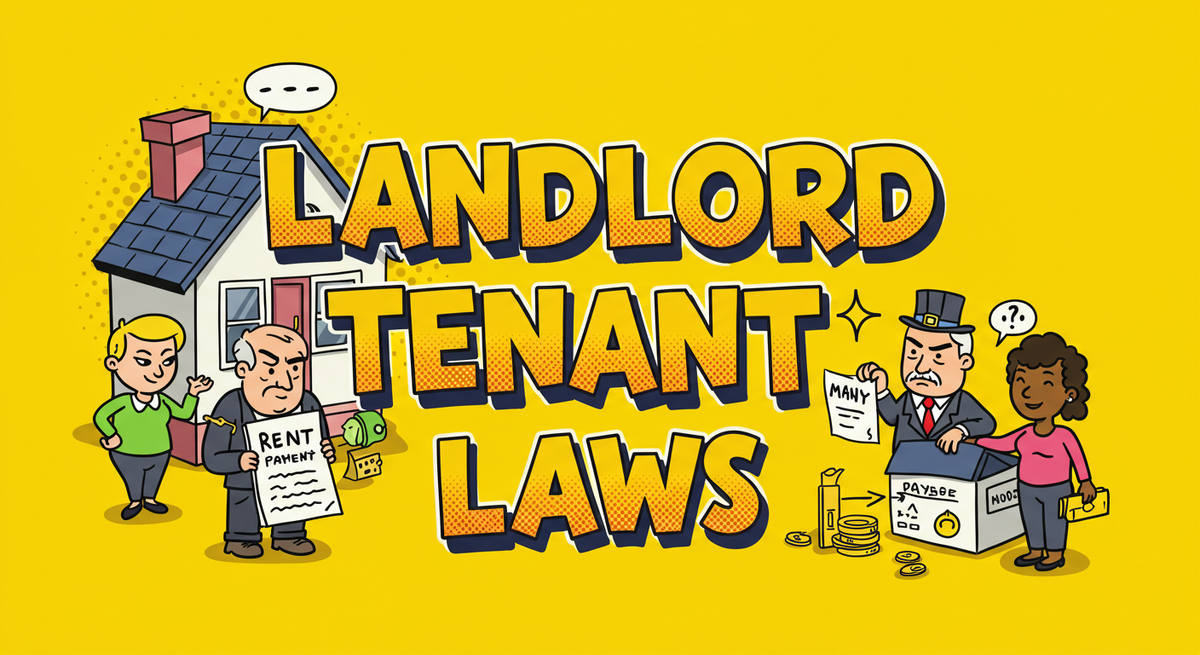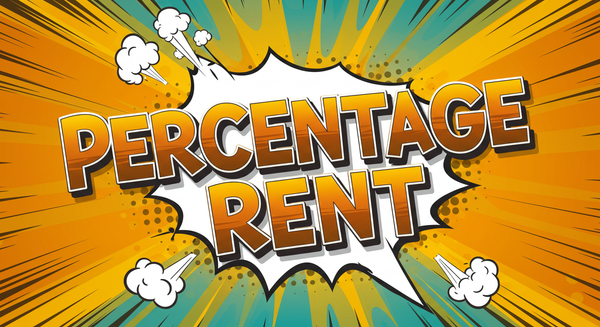Landlord-Tenant Laws: A Complete Guide for Property Managers
Landlord-tenant laws define the legal relationship between a landlord and tenant, regulating lease terms, rent payments, eviction procedures, and property responsibilities

Whether you manage a few single-family homes or oversee large multi-unit buildings, understanding landlord-tenant laws is a non-negotiable. Landlord-tenant laws define the legal relationship between a landlord and tenant, regulating lease terms, rent payments, eviction procedures, and property responsibilities.
Put simply, landlord-tenant law governs how property is rented, used, and maintained—and what happens when things go wrong. It’s a lot more than just knowing how to write a lease and finding a tenant to rent the property. Landlord-tenant laws touch everything from fair housing compliance and rent increases, to handling unpaid rent, abandoned property, or a lease termination.
And it starts from day one, from the moment you create your rental criteria.
This guide breaks it all down in plain English. You’ll learn what landlord-tenant law actually means, how it affects your day-to-day operations, where legal pitfalls exist, and what best practices will keep you on solid ground.
What Is Landlord-Tenant Law?
Landlord-tenant law refers to the body of legal rules that governs rental relationships between a landlord and a tenant. At its core, it defines who does what—and what happens when someone doesn’t hold up their end of the lease.
Under this legal framework, tenants are granted the right to exclusive use of a rental unit or dwelling unit, while landlords maintain ownership and specific responsibilities, like ensuring habitability and complying with fair housing laws.
These laws are shaped at the federal level (e.g., Fair Housing Act), state level (e.g., New York landlord tenant laws), and local ordinances (like rent control or rent stabilization programs).
There are key terms to understand:
- Lease Agreement: Legal contract outlining rights and duties of both parties.
- Eviction Process: Legal procedure for removing a tenant from the property.
- Rental Agreement: Sometimes used interchangeably with lease, though often refers to shorter-term arrangements.
The Landlord-Tenant Legal Relationship
Landlord
- Maintain habitability
- Provide essential services
- Enforce lease terms
- Issue proper notices
Shared Responsibilities
- Pay/collect rent on time
- Respect lease duration
- Provide notice before entry
- Uphold local housing laws
Tenant
- Pay rent as agreed
- Report maintenance issues
- Avoid lease violations
- Respect property and neighbors
Impact & Applications
Operational Impact
Whether you're adjusting rent, screening a prospective tenant, or responding to a maintenance request, landlord-tenant laws shape how you operate. Here's how:
- Lease Terms: Laws define what's legally enforceable—like notice periods for lease termination.
- Rent Increases: In cities like New York, increases are regulated by the Rent Guidelines Board.
- Fair Housing: Missteps in tenant screening can lead to housing discrimination claims.
Missing this detail could cost you thousands in back charges.
Federal HUD lease requirements and state laws often require:
- Specific lease clauses
- Clear documentation on security deposits
- Accessible policies for subsidized housing and multiple dwellings
A 2024 UC Riverside study found that stronger tenant rights correlated with more stable and affordable rental markets, highlighting the need to strike a balance between compliance and profitability.
Example: Avoiding a Costly Lease Violation
- Challenge: A landlord in New York issued an improper 30-day notice for a rent increase in a rent-stabilized unit.
- Solution: After learning that 90-day notice was required by New York law, the landlord revised their lease template.
- Outcome: Avoided legal penalties and retained tenant with proper rent increase procedures.
- Takeaway: Know your local notice rules—especially in rent-controlled or rent-stabilized areas.
Can You Legally Terminate a Lease?
Decision Flow for Common Termination Scenarios
- 1. Nonpayment of Rent
- Issue Pay or Quit notice (e.g. 3–5 days)
- If unpaid, begin eviction filing
- 2. Lease Violation
- Document incident and issue Cure notice
- If unresolved, follow legal eviction process
- 3. End of Lease Term
- Check local notice period (30–90 days)
- Provide non-renewal notice in writing
- 4. Just Cause Requirement
- Verify if your jurisdiction mandates cause
- Ensure lease breach or permitted reason exists
Legal & Compliance Essentials
Here are the most important legal must-knows:
- DO provide written leases with complete terms, including lease term, rent amount, and termination conditions.
- DO follow specific notice periods for eviction proceedings (e.g., 3-day, 30-day depending on local law).
- DO comply with federal fair housing law—never screen based on race, disability, familial status, etc.
- DON'T make verbal agreements that override a signed lease agreement.
- DON'T retaliate with eviction threats after a tenant files a maintenance complaint (illegal in most states).
- DON'T withhold security deposits without an itemized list of deductions.
Lease Compliance: What Property Managers Should and Shouldn't Do
✅ DO
- Use a written lease with clear terms
- Provide proper notice before entry or termination
- Follow fair housing laws when screening tenants
- Issue itemized deductions for deposit returns
- Document all lease violations and repairs
🚫 DON'T
- Make verbal changes to lease terms
- Withhold deposits without explanation
- Retaliate after tenant complaints
- Discriminate in advertising or selection
- Ignore required local/state notice periods
Resources:
- Cornell Law Definition: Landlord-Tenant Law
- Arizona Landlord-Tenant Act PDF
- Uniform Residential Landlord and Tenant Act (URLTA)
Best Practices for Landlord-Tenant Law
1. Standardize Your Lease Templates
Why it matters: Consistency avoids legal gray areas.
Action: Use customizable lease templates vetted by your legal team.
2. Keep a Compliance Calendar
Why it matters: Laws change frequently by state and city.
Action: Track key renewal, inspection, and notice deadlines.
3. Document Everything
Why it matters: If it’s not written down, it didn’t happen.
Action: Maintain logs of rent payment, eviction notices, repairs, and all tenant communication.
4. Train Your Team
Why it matters: Mistakes by staff create legal risk.
Action: Regularly review updates to landlord tenant laws and host in-house trainings.
Key Questions Answered
What's the difference between landlord-tenant law and real property law?
Landlord-tenant law governs rental relationships. Real property law covers ownership, land use, and broader asset rights. For property managers, focus on landlord-tenant law.
How is landlord-tenant law implemented?
Through written agreements, notices, court procedures, and housing codes. It plays out daily in how you handle lease signings, disputes, and rent collection. You can review the HUD lease structure for federally subsidized housing.
Can landlord-tenant laws change during a lease?
Yes—especially with local ordinances or emergency measures (like eviction moratoriums). Always check for updates in New York law or other jurisdictions.
Landlord-tenant laws are the foundation of ethical, profitable property management. When you understand these laws, you:
- Reduce legal risk through proactive compliance
- Improve tenant relationships by managing expectations
- Protect your bottom line with proper lease enforcement
Want to go deeper? Explore these resources:
Ready to optimize your property management? Explore our full resource library.
Legal Disclaimer:
The information on this website is sourced from publicly available materials and is provided for general informational purposes only. It is not intended as legal, financial, or accounting advice. LandlordDoc.com makes no guarantees about the accuracy or completeness of the information and assumes no liability for any errors, omissions, or outcomes related to its use.





